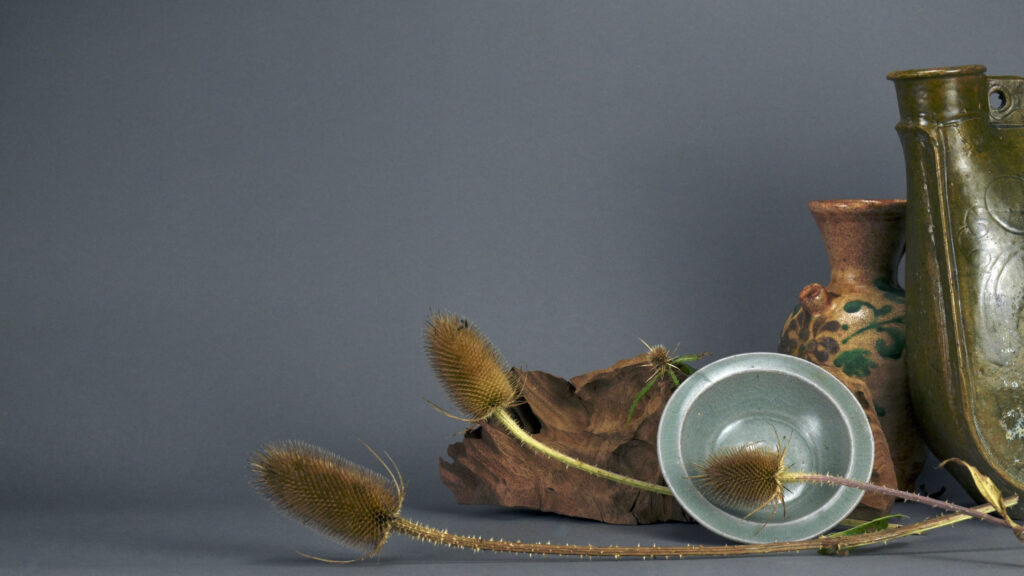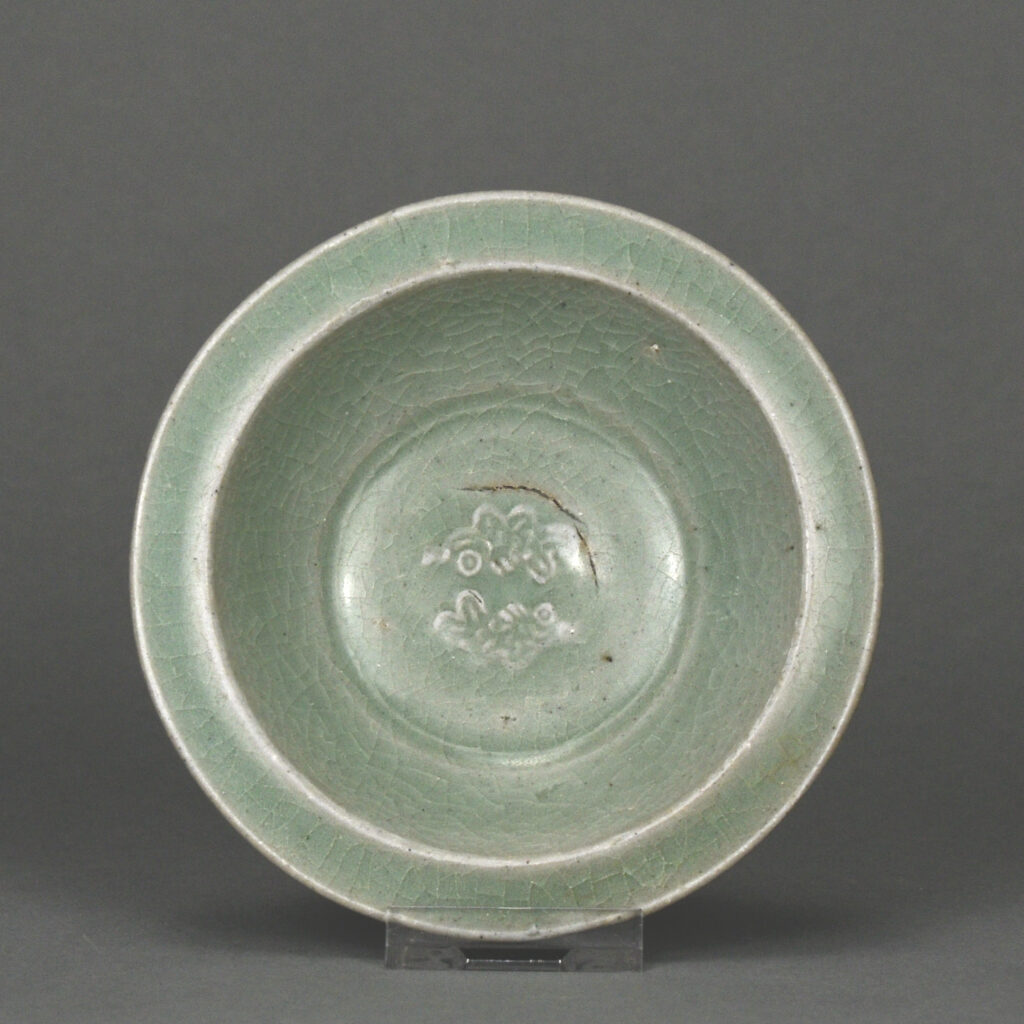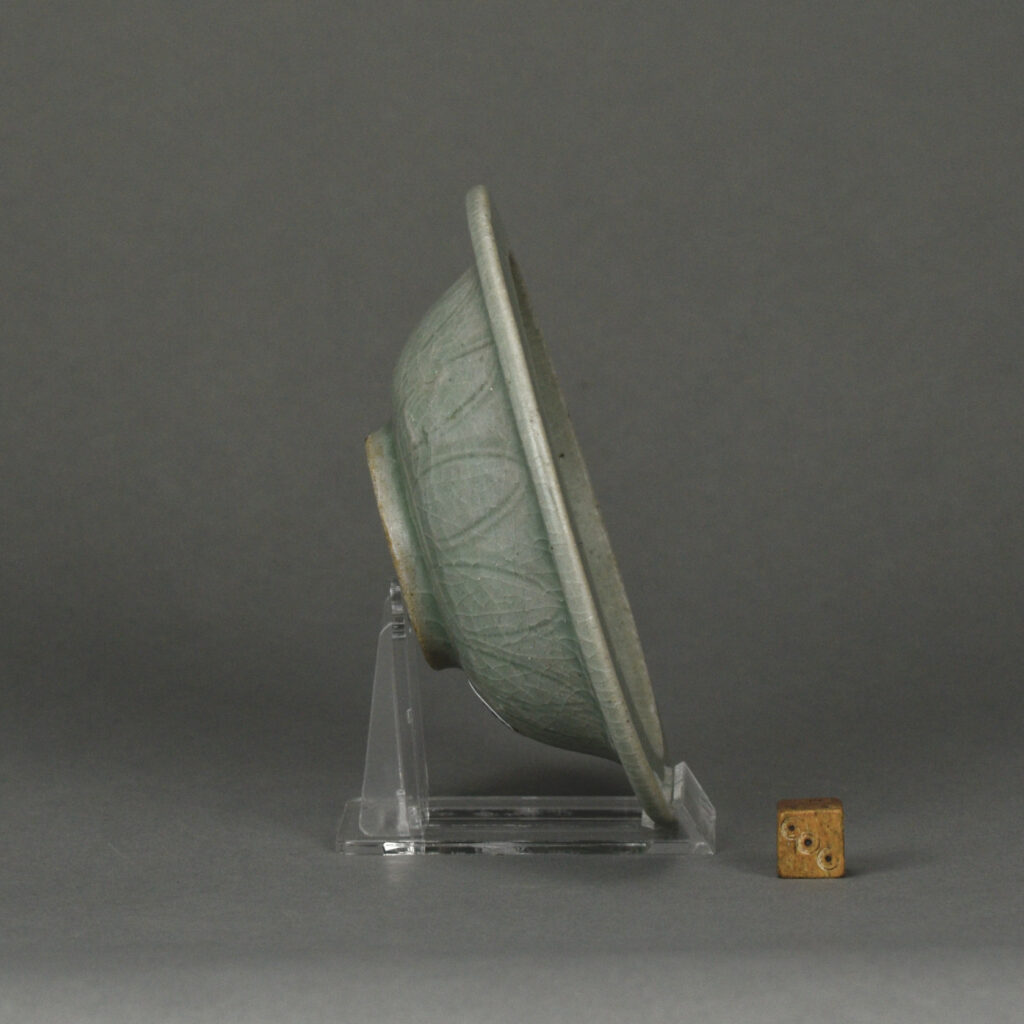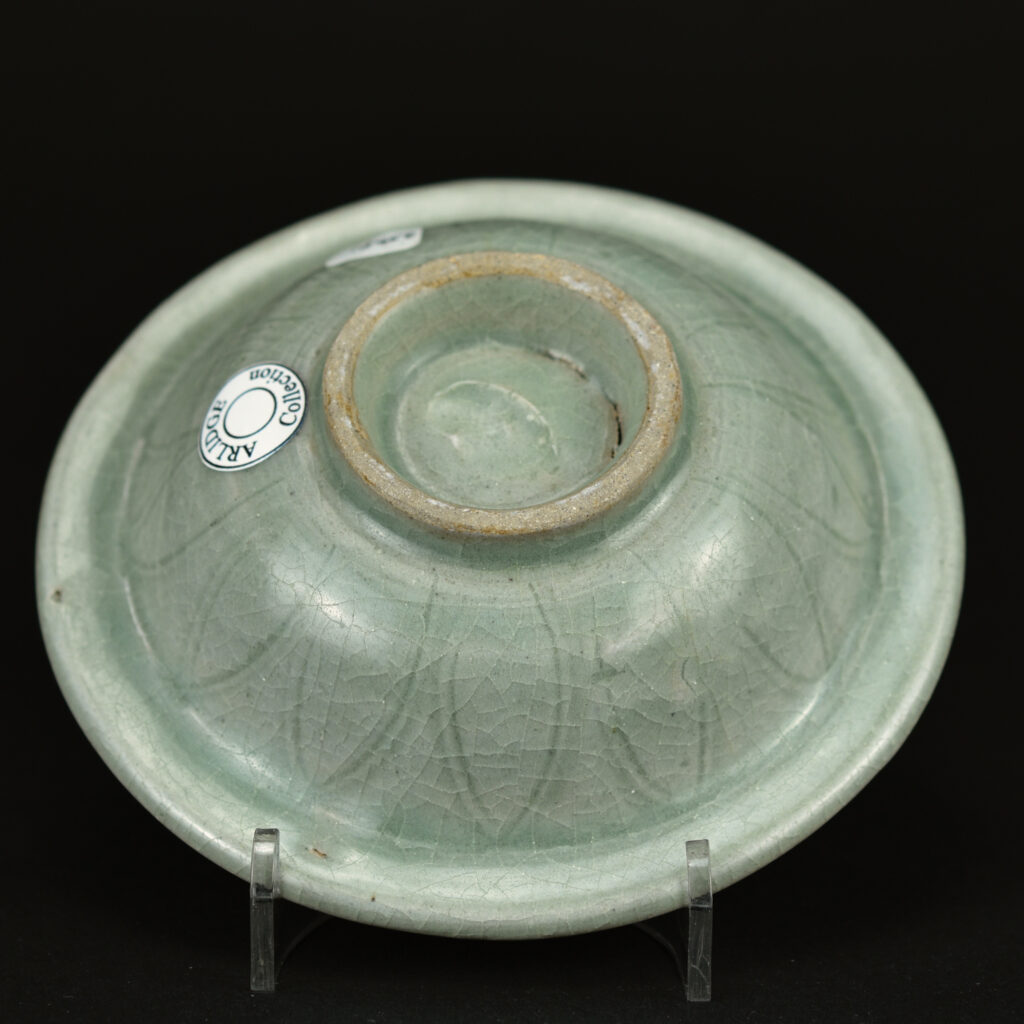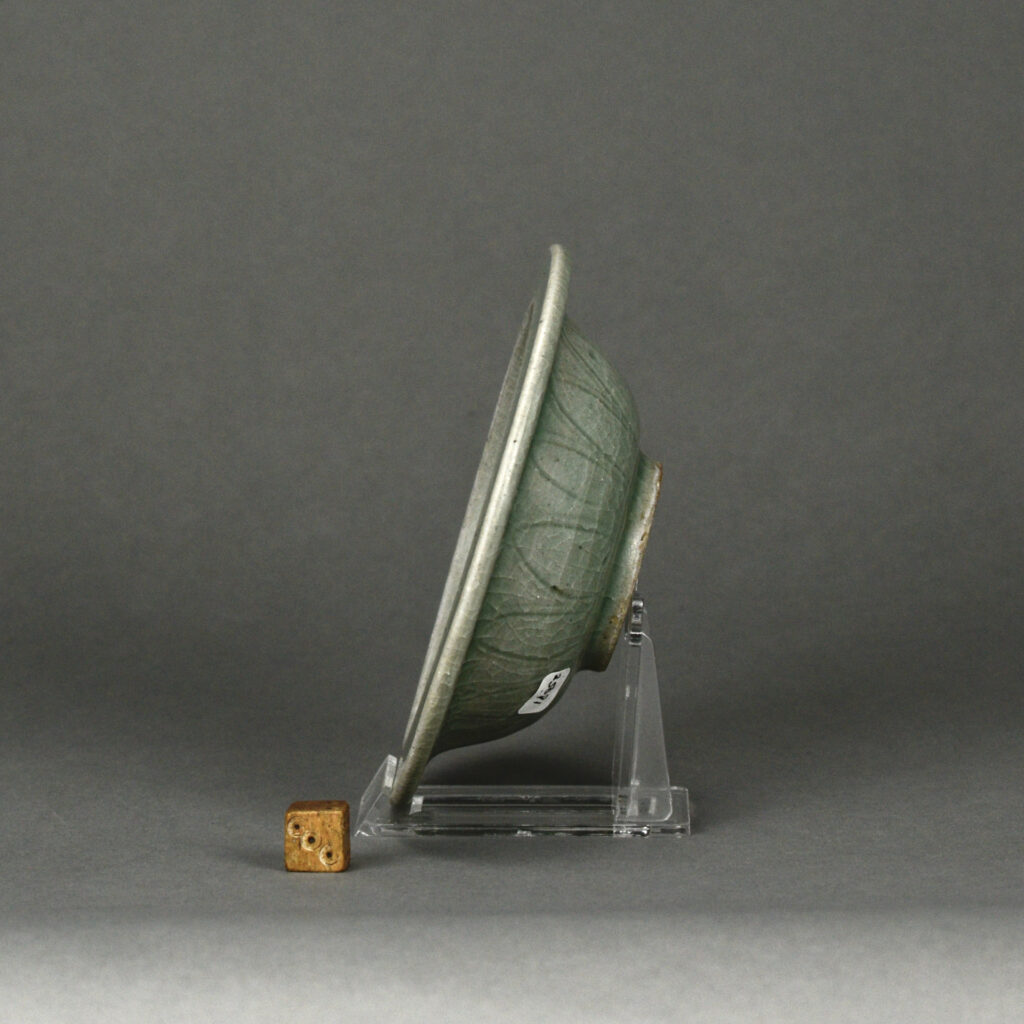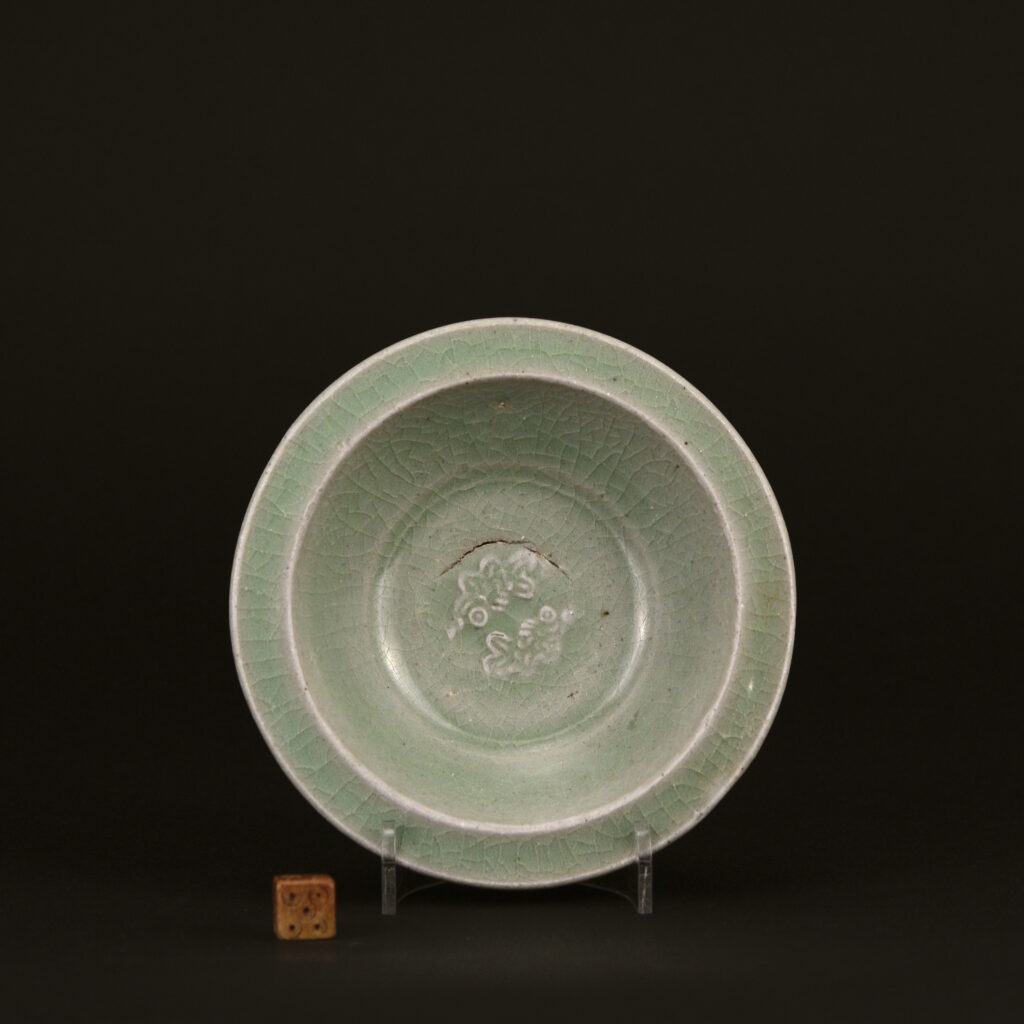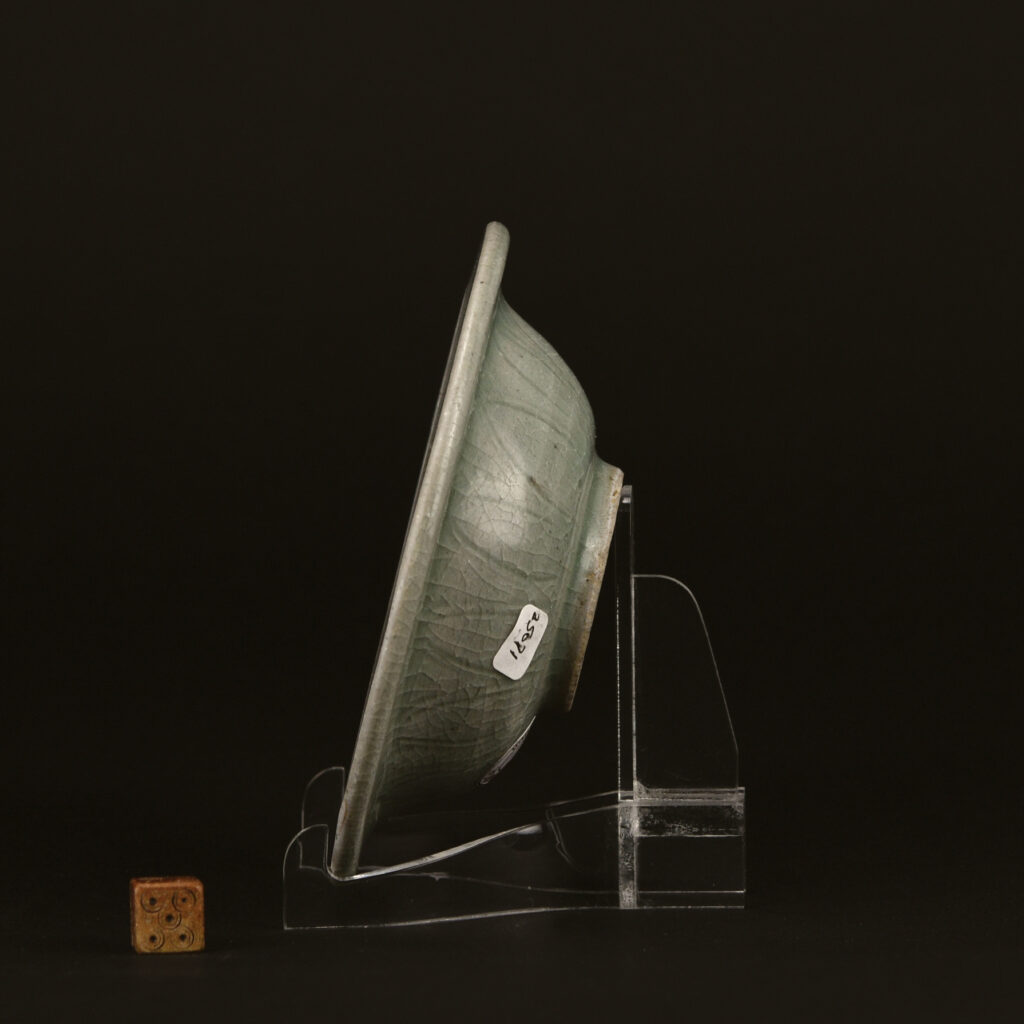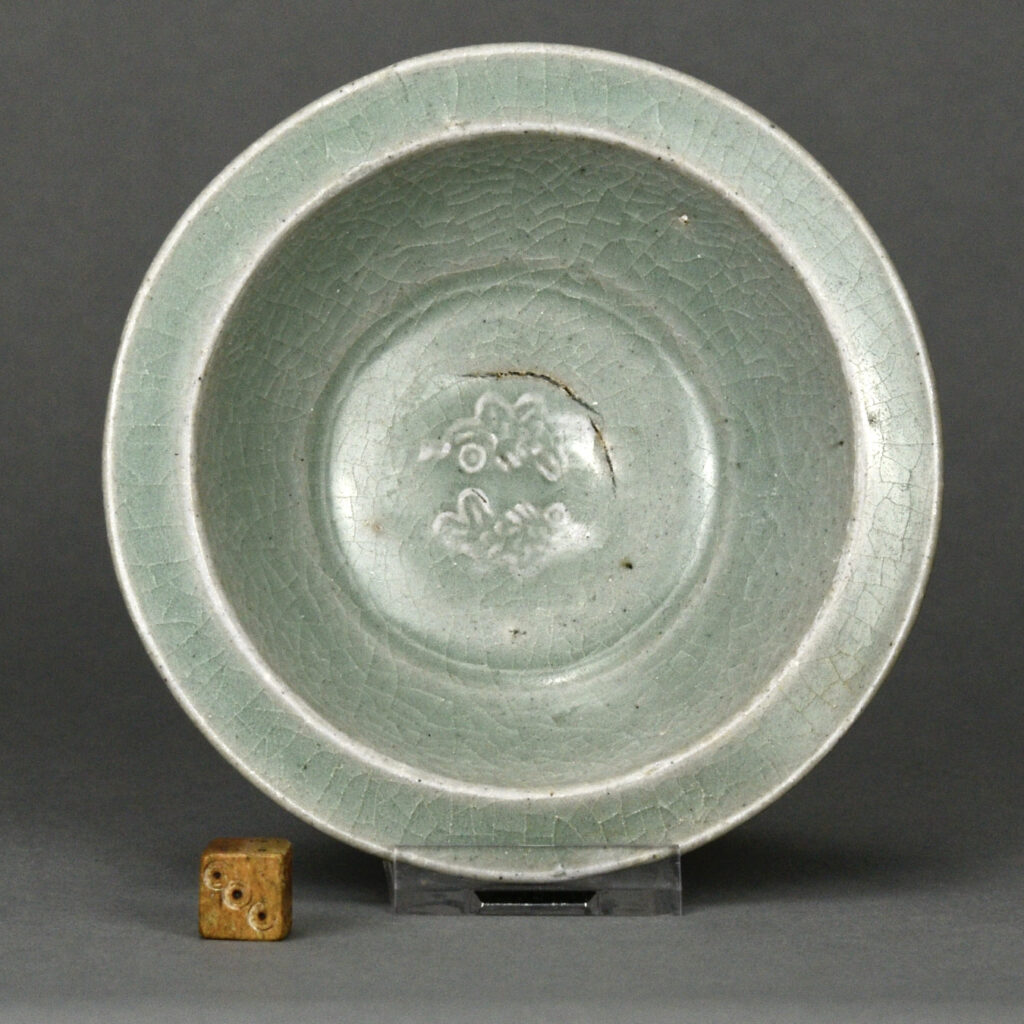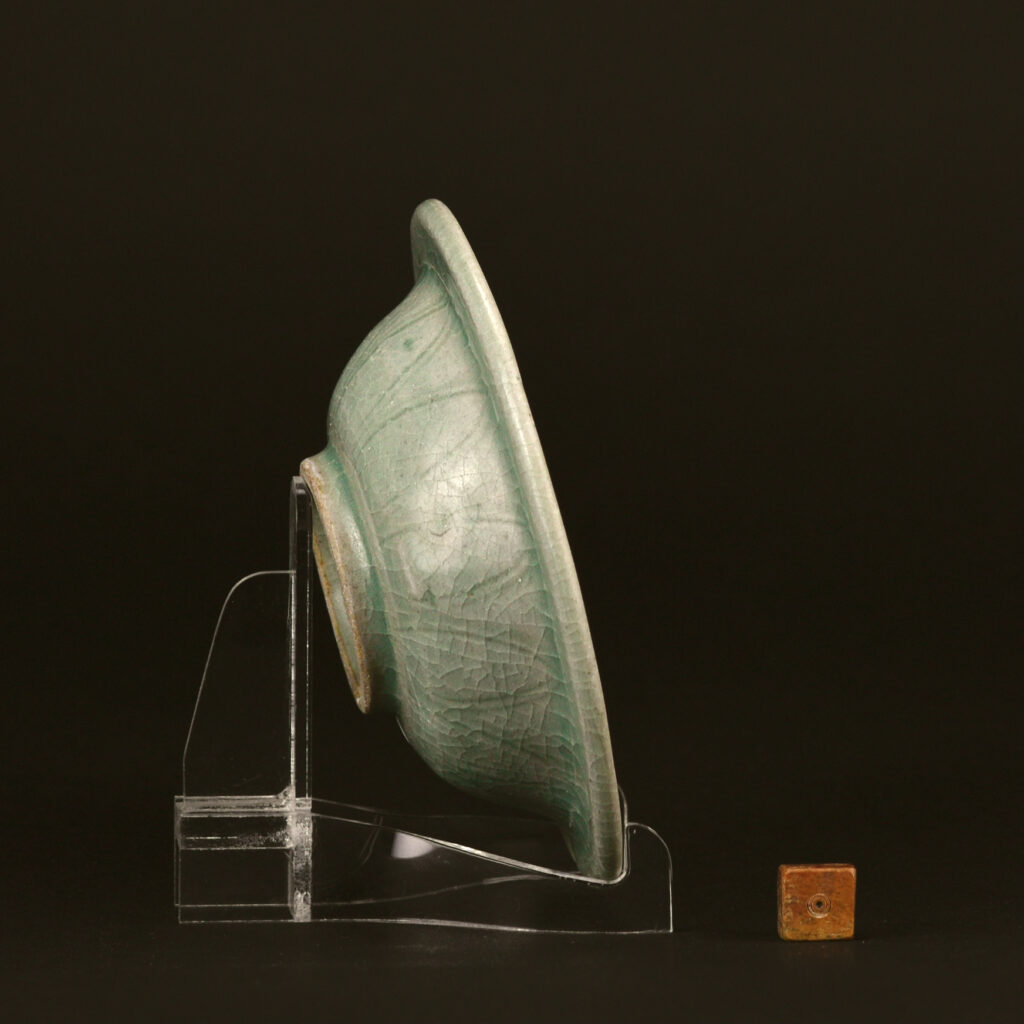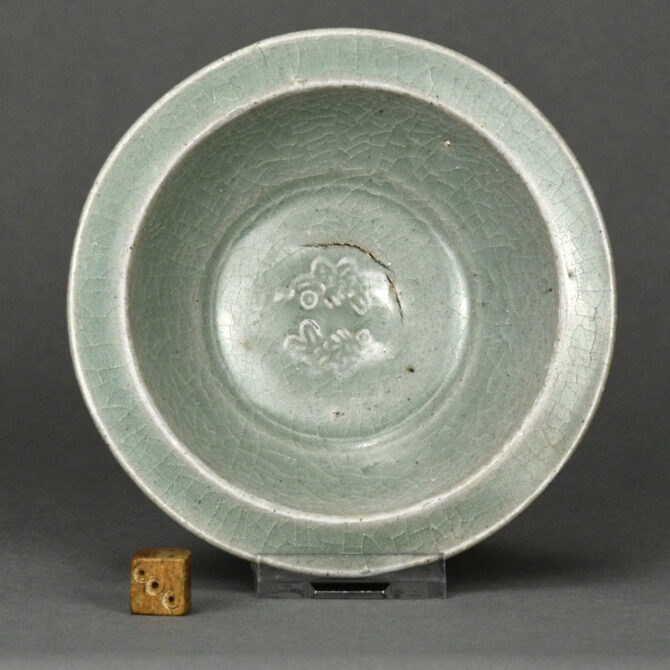
Southern Song or Yuan Longquan Celadon Twin Fish Dish
A Small Longquan Celadon `Twin Fish` dish, Southern Song (1127-1279) or Yuan (1279-1368), 13th or early 14th century. From the Longquan Kilns, Zhejiang Province. The center of the dish has two fish in relief swimming in opposite directs (Representing Marital Bliss). The reverse with lotus petal ribbing. The glaze is unusually translucent and is crazed, the colour is a clear pale green. The Chinese word for fish `Yu` is pronounced in the same way as the word for abundance. So fish have come to represent prosperity and the carp is often represented as sign of success because of its perseverance, swimming up river. Pairs of fish swimming together, representing marital bliss, were common from the Southern Song (1128-1279) but it was in the Yuan Dynasty (1279-1368) that fish swimming with aquatic plants became a common subject, the patterns were based on popular designs found in Southern China. Some of the earliest Chinese blue and white porcelain (c.1320-1350) depicts fish swimming with plants, frequently lotus as this represented purity. These Yuan designs were shown in the center of bowls and dishes surrounded by concentric geometric borders.It was not until the 16th century that freer, more open designs of fish swimming among seaweed and crabs were popular.
SOLD
- Condition
- In good condition, the center has a large open crack large which is a firing fault.
- Size
- Diameter : 12.2 cm (4 3/4 inches)
- Provenance
- The Peter Arlidge Collection of Song Ceramics. These were collected during a 50-year career in transport investment. Peter, who describes himself as an ‘old-fashioned collector’, comes from a long line of potters and was the first son not to take up the family profession. Instead, he had a career in transport investment that made him resident in countries such as Malaysia, Vietnam and Indonesia where his love affair with ceramics developed. During Peter’s time in Malaysia in the 1960s his interest in Chinese ceramics peaked and when he later moved to Indonesia, he bought the first two pieces for what would become a much prized personal collection.
- Stock number
- 25071
- References
- For a similar Celadon dish see : Chinese Celadons And Other Related Wares In Southeast Asia (Southeast Asian Ceramic Society, Singapore. Arts Orientalis, Singapore.1979) page 176 plate 93. For a Chinese Celadon dish of this type see : Special Exhibition of Cultural Relics Found Off Sinan Coast (National Museum of Korea 1977) Items 28. For another Similar Celadon Dish See ; Chinese Ceramics from the Meiyintang Collection Volume 1 (Regina Krahl, Azimuth Editions, 1994) Page 299 Item 559.
Information
Celadon Ware :
Celadon is a term used to describe several types of Chinese stoneware and porcelain, as well a ceramics from other countries, notably from Korea and Japan. The term is a imprecise one, applying to various types of green glazed ceramics, but not all ceramics with green glazes, there are several wares that have a green glaze that are not refereed to as celadon. For example Green Jun and Ge Ware. For this reason there has been a move to try to clarify the situation by using the term `Green Ware`. But for now Celadon is a more familiar and therefore useful term. The origins of the term Celadon are not clear, one theory is that the term first appeared in France in the 17th century and that it is named after the shepherd Celadon in Honoré d`Urfé`s French pastoral romance, L`Astrée (1627), who wore pale green ribbons. (D`Urfe, in turn, borrowed his character from Ovid`s Metamorphoses.) Another theory is that the term is a corruption of the name of Saladin, the Ayyubid Sultan, who in 1171 sent forty pieces of the ceramic to Nur ad-Din, Sultan of Syria. Yet a third theory is that the word derives from the Sanskrit sila and dhara, which mean "stone" and "green" respectively. Celadon ware originated in Zhejiang Province in the Eastern Han Dynasty, however green monochrome glazes can be found on stoneware much before that date. Zhejiang is were the famous Longquan Celadons were made but Celadon wares were also produced at Jiangsu, Hubei, Hunan and Jiangxi. The production of Celadon Ware required a reducing atmosphere of around 1300 degrees C., the colouring agent was a mixture of iron oxide and titanium. The glaze was applied very thickly, and was full of tiny bubbles which defuse the light giving the appearance of richness and softness. Celadon ware originated in Zhejiang Province in the Eastern Han Dynasty, however green monochrome glazes can be found on stoneware much before that date. Zhejiang is were the famous Longquan Celadons were made but Celadon wares were also produced at Jiangsu, Hubei, Hunan and Jiangxi. The production of Celadon Ware required a reducing atmosphere of around 1300 degrees C., the colouring agent was a mixture of iron oxide and titanium. The glaze was applied very thickly, and was full of tiny bubbles which defuse the light giving the appearance of richness and softness.
Fish / Yu :
The Chinese word for fish `Yu` is pronounced in the same way as the word for abundance. So fish have come to represent prosperity and the carp is often represented as sign of success because of its perseverance, swimming up river. Pairs of fish swimming together, representing marital bliss, were common from the Southern Song (1128-1279) but it was in the Yuan Dynasty (1279-1368) that fish swimming with aquatic plants became a common subject, the patterns were based on popular designs found in Southern China. Some of the earliest Chinese blue and white porcelain (c.1320-1350) depicts fish swimming with plants, frequently lotus as this represented purity. These Yuan designs were shown in the center of bowls and dishes surrounded by concentric geometric borders.It was not until the 16th century that freer, more open designs of fish swimming among sea weed and crabs were popular.
